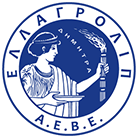- +359 2 996 3853
- +359 2 996 3853
- office@hellagrolip.bg
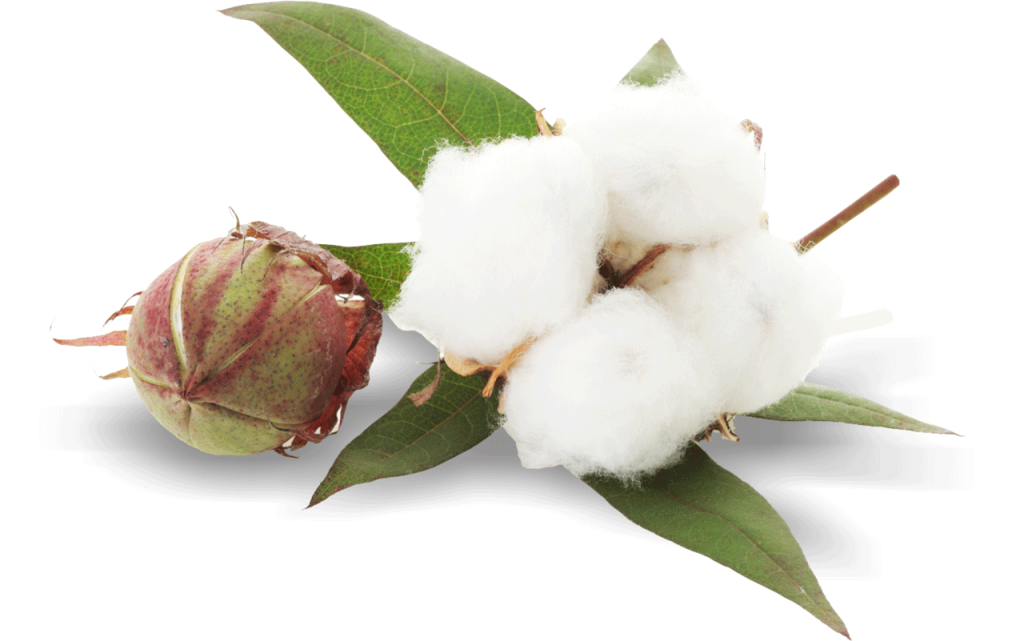
Cotton is a highly adaptable plant and it can be cultivated in a wide variety of soils. High yields are achieved in deep, fertile soils of medium mechanical composition, with adequate drainage and good moisture capacity.
In light soils, it requires increased fertilizing. Heavy soils retain water, which suffocates and causes diseases to the root system, and it is therefore unsuitable for cultivation.
Cotton is quite tolerant to soil salinity. Regarding acidity, it grows in a wide pH range, from 5,5 to 8,0, ideally within 6,8-7,3.
It is a warm climate plant, requiring high temperatures during growth and fruiting. During sowing, the ideal soil temperature for adequate sprouting in the field is 13οC, while the ideal atmospheric temperature for fast growth and high yields is 32οC-34oC.
Despite the fact that cotton is a type of crop that does not particularly deplete the soil, it does have high requirements in nutrients in order to grow successfully and produce high yields. Although part of the added nutrients returns to the soil through the integration of the stems and residues, the requirements of cotton for an early and fast vegetative growth and its limited cultivation cycle in the climate conditions of Greece make adequate and targeted fertilizing a key factor regarding the yields and quality characteristics of the production:
| лементи (кг/хектар) | |||
|---|---|---|---|
| Тип | (N) | (P2O5) | (K2O) |
| Cotton | 150 – 180 | 60 – 80 | 90 – 120 |
The proper temperature and adequate moisture in the soil are necessary conditions for a uniform growth of the seeds.
From sprouting until the 5th node, it is mainly the roots which are growing while vegetative growth remains limited. After the 5th node, as temperatures rise, vegetative growth is accelerated, with the emergence of vegetative and then fruiting branches on which the squares, flowers, and bolls will form.
At this stage, it is essential that the following have been achieved: strong establishment of the crops in the soil, development – both in depth and in volume – of the root system, and the formation of plants with a rich leaf area, all of which should contribute to increased flowering, strong fruit setting, and boll growth at later stages.
Basic fertilizing is crucial to crop yields, as it secures the necessary quantities of Nitrogen (Ν), Phosphorus (Ρ) and Potassium (Κ) for early plant growth.
Without basic fertilizing, crops exhibit deficiencies and enter the reproductive stage without having achieved the necessary vegetative growth. This leads to a loss of produce which cannot be counterbalanced by later fertilizing or other cultivation practices.
Азотът (Ν) stimulates vegetative growth, enhances photosynthesis, and increases the height of the plants and the number of branches, leaves, and squares.
Фосфор (P) boosts the growth of the root system and strong establishment of the plant in the soil, and it contributes to the development of the meristems on which the branches, leaves, and squares will grow.
Калият (Κ) boosts root and leaf growth, enhances photosynthesis, improves water absorption, and protects the crop from diseases and adverse weather conditions. It also improves plant endurance against adromycosis.
Магнезий (Mg) increases the number of leaves and the photosynthetic activity of the plants.
The phase of reproduction begins with the emergence of the first flower buds (squares) mid-June, and it is one of the most crucial stages, as the crop both enters the reproductive stage and continues with the vegetative growth at the same time. The plants produce new branches and grow their roots at a maximum rate, and the crop covers the entire field, both over and under the surface of the soil.
The goal is to have the best possible vegetative growth in balance with fruiting so they do not compete with each other, resulting in excessive shading of the lower leaves, delayed flowering, square/flower shedding, and boll shedding later on.
During this period the plants are extremely sensitive to lack of water, extreme temperatures, lack of light, and insufficient nutrients, particularly Nitrogen, Potassium, Boron и Цинк.
The requirements in Калий during this time need to be covered by basic fertilizing, while the requirements in Азот by top fertilizing before flowering.
Trace elements, Boron и Цинк, which are essential to the crops, need to be supplied either by basic fertilizing, or by top fertilizing with Nitrogen fertilizers containing them, or by applications between the leaves during the formation of the squares.
Азотът (Ν) increases the production of flowering branches and flowers and boosts the growth of flower parts.
Фосфор (P) contributes to the crop entering the phase of reproduction in time and to the formation of the flower organs.
Калият (Κ) increases the production of squares and flowers and the photosynthetic activity of the leaves. It reduces the cut-off of reproductive organs, balances the adverse effects of any Азот surplus, and it regulates the water balance of the plant.
Борът (Β) и Цинк (Zn) increase the production and fertility of pollen, improve flowering and fruit setting, participate in the early development of the bolls, and they reduce shedding of the latter.
Productive flowering begins three weeks after the emergence of squares (early July) and lasts for six weeks (mid-August). At the early stages of flowering, fruit setting is high; it is gradually reduced after the 4th week.
The bolls develop fast and come into their final size three weeks after fruit setting, while it takes about four more weeks for them to mature and open.
The fibers appear right after fruit setting. First (15-25 days) they grow in length, while they increase in width during boll maturation.
During this time, the requirements of the plants in nutrients, water, and carbohydrates are maximized in order to cover the needs of boll increase, seed formation, and fiber growth.
Any deficiencies in Азот и Калий, combined with unfavorable weather conditions and diseases, lead to square and boll shedding, seeds and bolls of lower weight, and lower quality fibers.
Азотът (Ν) increases the number and weight of the bolls which remain on the plant, the weight of the seeds, and the ratio and length of the fibers.
Phosphoru (P) leads to earlier maturation and increases the weight of the bolls and seeds, as well as the diameter and resilience of the fibers.
Potassium (K) increases the length and width of the fibers, as well as the weight and oil content of the seeds.
The goal is to cover the needs of the plant in nutrients which are necessary for its strong establishment, the formation of a rich root system, and an early and robust vegetative growth.
Without basic fertilizing, nutrient uptake is insufficient at the early stages, due to low temperatures and limited root growth. The plants exhibit deficiencies and the result is loss of produce which cannot be counterbalanced by later fertilizing or other cultivation practices.
Linear application during sowing facilitates the uptake of nutrients, particularly of Фосфор и Калий, which are slowly available in the soil.
Дозировка:
Το Азот supplied through basic fertilization needs to be in Ammoniacal form so that it remains readily available to the plants throughout the entire period from sprouting to flowering.
The use of complex multi-nutrient fertilizers with nanopolymer technology (Ωmega fert) or complex stabilized fertilizers (NutrActive) is recommended. Enriched with the Trace elements of Boron and Zinc, these fertilizers successfully provide the crops with integral nutrition, minimize losses, and ensure a robust growth of the root system and vegetation.
| Cotton fertilizing | ||
|---|---|---|
| Тип на тора | Стадии на торене | Дозировка (кг/хектар) |
NutrActive bor 21-7-11 (+10) +0,3B | Основно торене | 400 – 600 kg |
* Цитираните дози са ориентировъчни. Относно торенето на културите, необходимо е да се вземат под внимание съветите на местните агрономи.
Неполивните лозя, от които се произвежда висококачествено вино,поради ниската интензивност и ориентацията им към постигане на високо качество, са неподходящи за повърхностно торене; същите могат да се наторяват само с фосфор-калиеви съединения и микроелементи между листата, както и да се третират със спрейове за растителна защита.
.
Дозировка:
В поливните лозя с висока производителност е необходимо възможно най-интензивно торене, за да се задоволят повишените нужди от азот, фосфор и калий, така че лозите да преминат през бърз растеж и зреене на гроздето, както и да се стимулира ранното зреене и подобрят качествените характеристики на продукцията.
Nitrogen fertilizers with nanopolymer technology (Ωmega 26N) or stabilized Ammoniacal Nitrogen (NutrActive) is recommended. They reduce Nitrogen losses from the soil and secure the adequate supply of the crops until the final stages of boll filling. In the case of Nitrogen application through the irrigation system, it is recommended either to use water-soluble Ammonium Sulphate Nitrate (ASN) (Ωmega 26N solub – Fertammon 26 solub) which ensures the smooth nutrition of the plants with Nitrogen and Sulphur, or the application of water-soluble Ammonium Nitrate (Nutrammon solub) which provides the crops with a
balanced ratio of Ammoniacal and Nitric Nitrogen.
| Cotton fertilizing | ||
|---|---|---|
| Тип на тора | Стадии на торене | Дозировка (кг/хектар) |
NutrActive 27N 27-0-0 (+27) | Повърхностно торене | 300 – 400 kg |
* Цитираните дози са ориентировъчни. Относно торенето на културите, необходимо е да се вземат под внимание съветите на местните агрономи.
| Тип | Основно торене | Повърхностно торене |
|---|---|---|
| Cotton |
NutrActive |
NutrActive |
Basic fertilizers
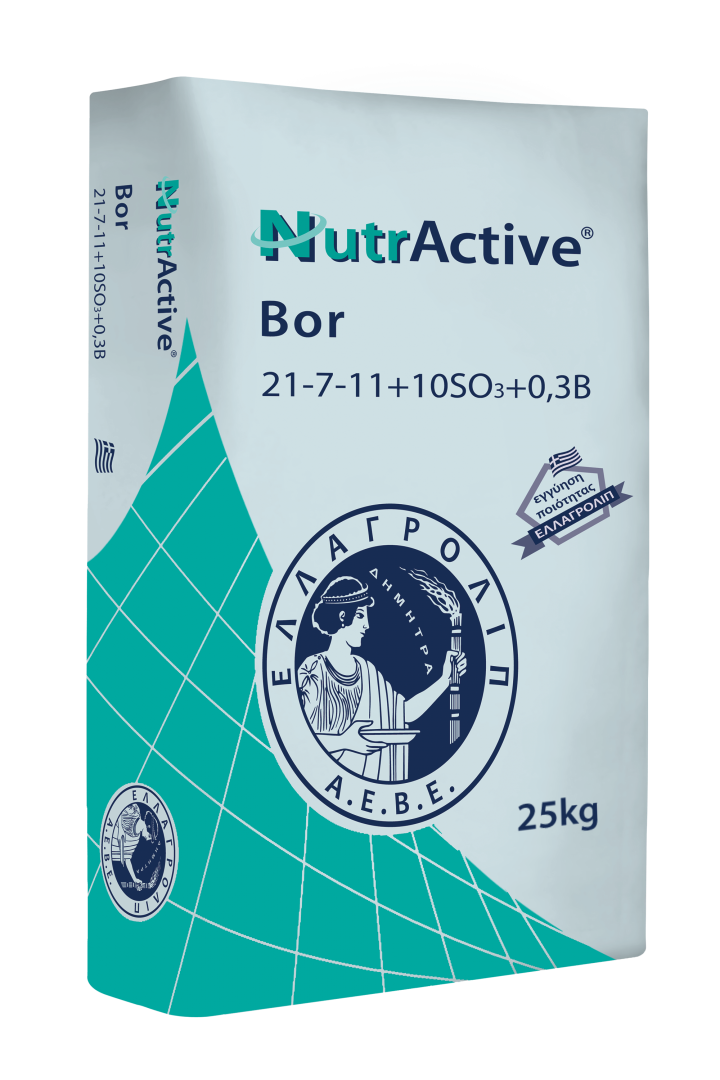
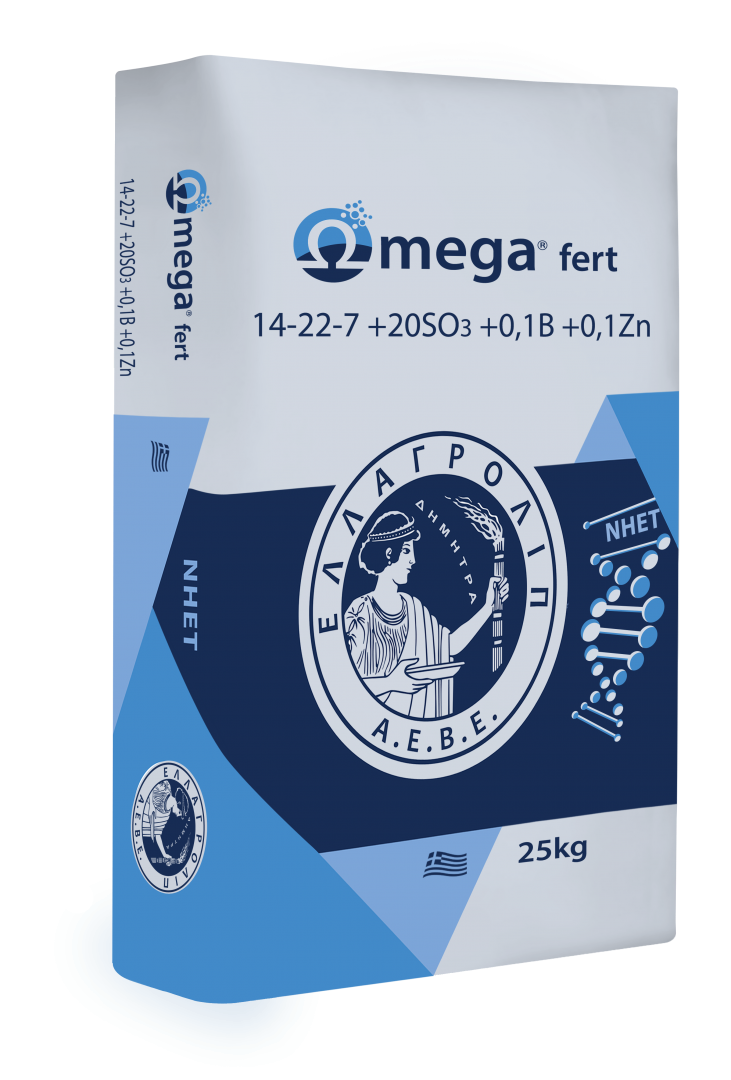
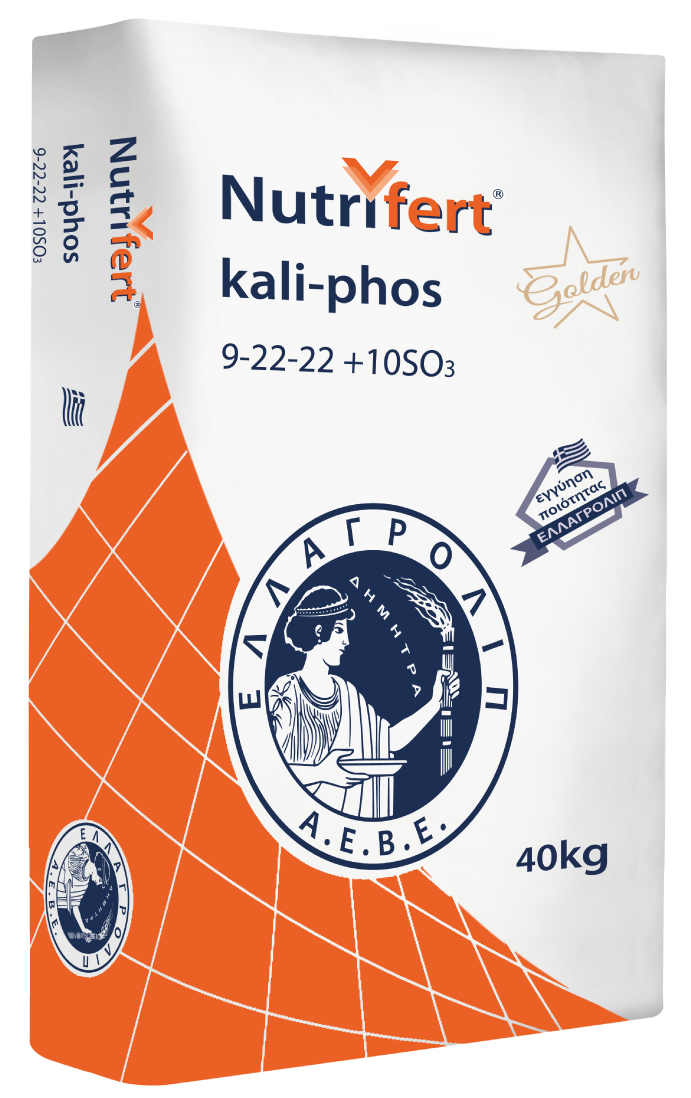
Азотни торове за повърхностно торене
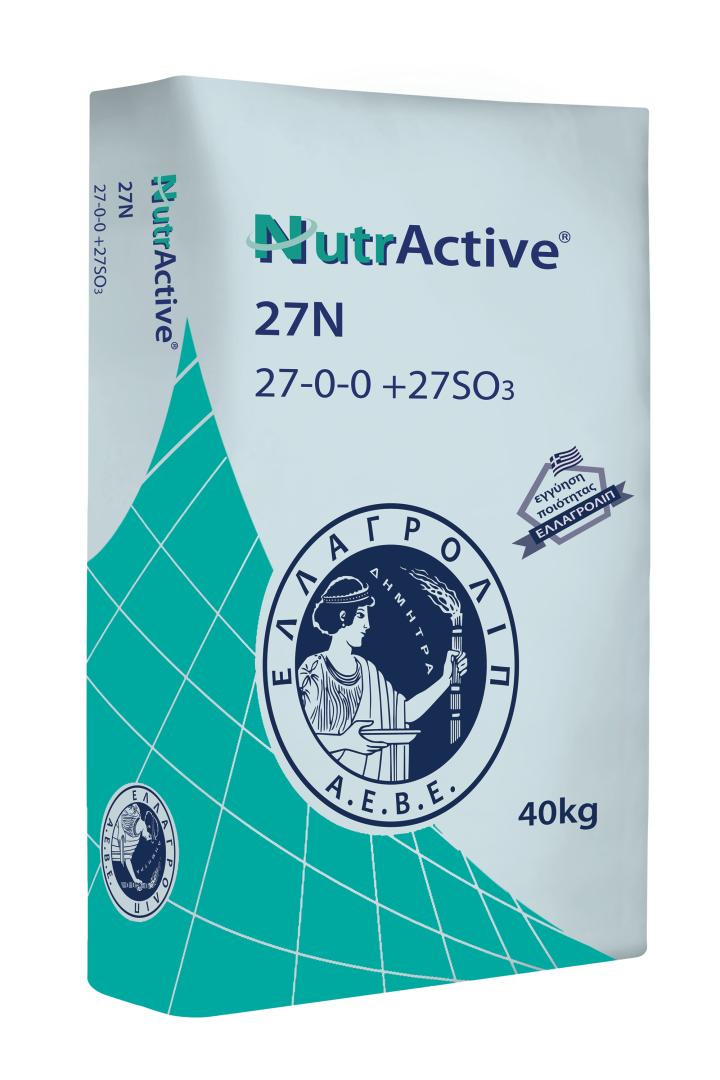
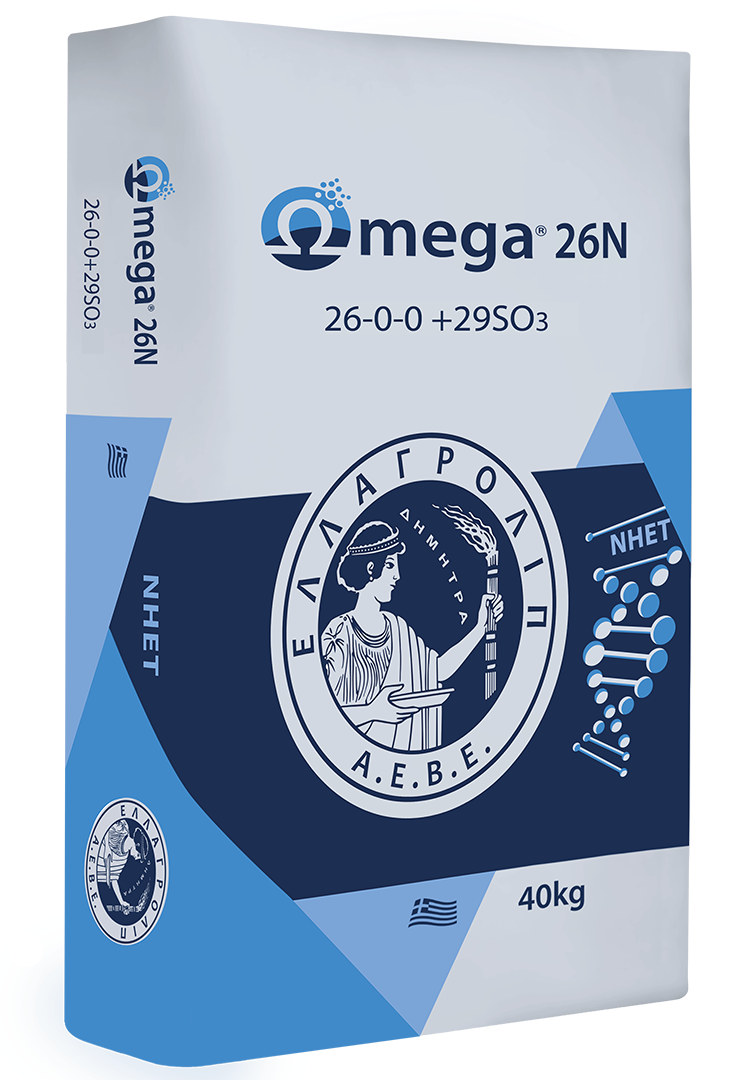
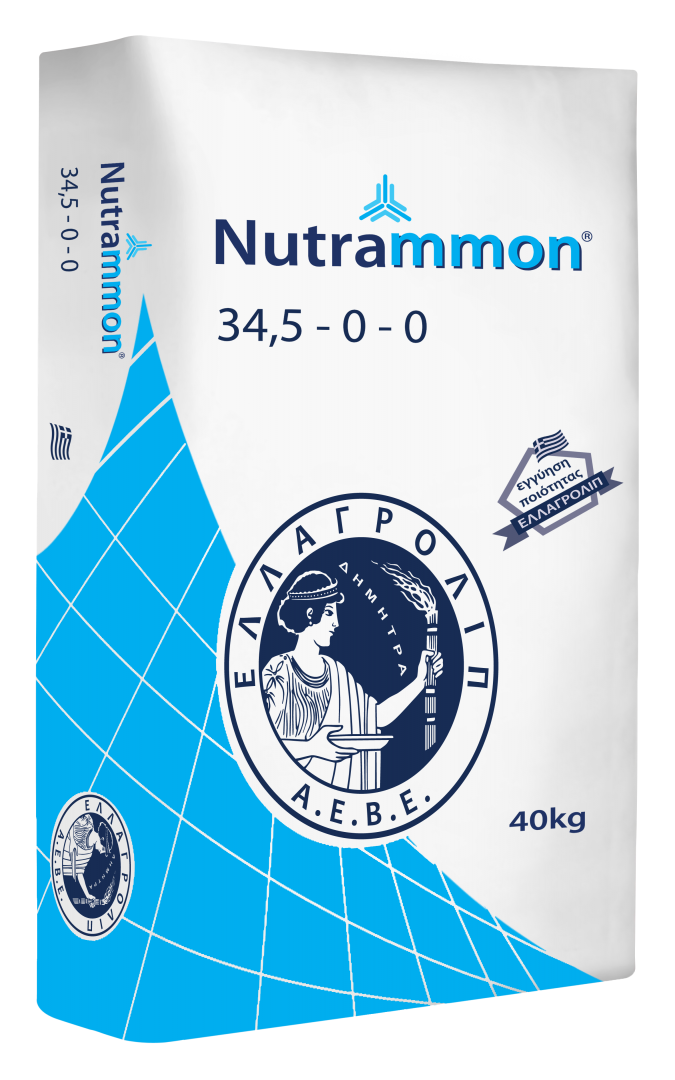
Cotton is a highly adaptable plant and it can be cultivated in a wide variety of soils. High yields are achieved in deep, fertile soils of medium mechanical composition, with adequate drainage and good moisture capacity.
In light soils, it requires increased fertilizing. Heavy soils retain water, which suffocates and causes diseases to the root system, and it is therefore unsuitable for cultivation.
Cotton is quite tolerant to soil salinity. Regarding acidity, it grows in a wide pH range, from 5,5 to 8,0, ideally within 6,8-7,3.
It is a warm climate plant, requiring high temperatures during growth and fruiting. During sowing, the ideal soil temperature for adequate sprouting in the field is 13οC, while the ideal atmospheric temperature for fast growth and high yields is 32οC-34oC.
Despite the fact that cotton is a type of crop that does not particularly deplete the soil, it does have high requirements in nutrients in order to grow successfully and produce high yields. Although part of the added nutrients returns to the soil through the integration of the stems and residues, the requirements of cotton for an early and fast vegetative growth and its limited cultivation cycle in the climate conditions of Greece make adequate and targeted fertilizing a key factor regarding the yields and quality characteristics of the production:
| лементи (кг/хектар) | |||
|---|---|---|---|
| Тип | (N) | (P2O5) | (K2O) |
| Cotton | 150 – 180 | 60 – 80 | 90 – 120 |
The proper temperature and adequate moisture in the soil are necessary conditions for a uniform growth of the seeds.
From sprouting until the 5th node, it is mainly the roots which are growing while vegetative growth remains limited. After the 5th node, as temperatures rise, vegetative growth is accelerated, with the emergence of vegetative and then fruiting branches on which the squares, flowers, and bolls will form.
At this stage, it is essential that the following have been achieved: strong establishment of the crops in the soil, development – both in depth and in volume – of the root system, and the formation of plants with a rich leaf area, all of which should contribute to increased flowering, strong fruit setting, and boll growth at later stages.
Basic fertilizing is crucial to crop yields, as it secures the necessary quantities of Nitrogen (Ν), Phosphorus (Ρ) and Potassium (Κ) for early plant growth.
Without basic fertilizing, crops exhibit deficiencies and enter the reproductive stage without having achieved the necessary vegetative growth. This leads to a loss of produce which cannot be counterbalanced by later fertilizing or other cultivation practices.
Азотът (Ν) stimulates vegetative growth, enhances photosynthesis, and increases the height of the plants and the number of branches, leaves, and squares.
Фосфор (P) boosts the growth of the root system and strong establishment of the plant in the soil, and it contributes to the development of the meristems on which the branches, leaves, and squares will grow.
Калият (Κ) boosts root and leaf growth, enhances photosynthesis, improves water absorption, and protects the crop from diseases and adverse weather conditions. It also improves plant endurance against adromycosis.
Магнезий (Mg) increases the number of leaves and the photosynthetic activity of the plants.
The phase of reproduction begins with the emergence of the first flower buds (squares) mid-June, and it is one of the most crucial stages, as the crop both enters the reproductive stage and continues with the vegetative growth at the same time. The plants produce new branches and grow their roots at a maximum rate, and the crop covers the entire field, both over and under the surface of the soil.
The goal is to have the best possible vegetative growth in balance with fruiting so they do not compete with each other, resulting in excessive shading of the lower leaves, delayed flowering, square/flower shedding, and boll shedding later on.
During this period the plants are extremely sensitive to lack of water, extreme temperatures, lack of light, and insufficient nutrients, particularly Nitrogen, Potassium, Boron и Цинк.
The requirements in Калий during this time need to be covered by basic fertilizing, while the requirements in Азот by top fertilizing before flowering.
Trace elements, Boron и Цинк, which are essential to the crops, need to be supplied either by basic fertilizing, or by top fertilizing with Nitrogen fertilizers containing them, or by applications between the leaves during the formation of the squares.
Азотът (Ν) increases the production of flowering branches and flowers and boosts the growth of flower parts.
Фосфор (P) contributes to the crop entering the phase of reproduction in time and to the formation of the flower organs.
Калият (Κ) increases the production of squares and flowers and the photosynthetic activity of the leaves. It reduces the cut-off of reproductive organs, balances the adverse effects of any Азот surplus, and it regulates the water balance of the plant.
Борът (Β) и Цинк (Zn) increase the production and fertility of pollen, improve flowering and fruit setting, participate in the early development of the bolls, and they reduce shedding of the latter.
Productive flowering begins three weeks after the emergence of squares (early July) and lasts for six weeks (mid-August). At the early stages of flowering, fruit setting is high; it is gradually reduced after the 4th week.
The bolls develop fast and come into their final size three weeks after fruit setting, while it takes about four more weeks for them to mature and open.
The fibers appear right after fruit setting. First (15-25 days) they grow in length, while they increase in width during boll maturation.
During this time, the requirements of the plants in nutrients, water, and carbohydrates are maximized in order to cover the needs of boll increase, seed formation, and fiber growth.
Any deficiencies in Азот и Калий, combined with unfavorable weather conditions and diseases, lead to square and boll shedding, seeds and bolls of lower weight, and lower quality fibers.
Азотът (Ν) increases the number and weight of the bolls which remain on the plant, the weight of the seeds, and the ratio and length of the fibers.
Phosphoru (P) leads to earlier maturation and increases the weight of the bolls and seeds, as well as the diameter and resilience of the fibers.
Potassium (K) increases the length and width of the fibers, as well as the weight and oil content of the seeds.
The goal is to cover the needs of the plant in nutrients which are necessary for its strong establishment, the formation of a rich root system, and an early and robust vegetative growth.
Without basic fertilizing, nutrient uptake is insufficient at the early stages, due to low temperatures and limited root growth. The plants exhibit deficiencies and the result is loss of produce which cannot be counterbalanced by later fertilizing or other cultivation practices.
Linear application during sowing facilitates the uptake of nutrients, particularly of Фосфор и Калий, which are slowly available in the soil.
Дозировка:
Το Азот supplied through basic fertilization needs to be in Ammoniacal form so that it remains readily available to the plants throughout the entire period from sprouting to flowering.
The use of complex multi-nutrient fertilizers with nanopolymer technology (Ωmega fert) or complex stabilized fertilizers (NutrActive) is recommended. Enriched with the Trace elements of Boron and Zinc, these fertilizers successfully provide the crops with integral nutrition, minimize losses, and ensure a robust growth of the root system and vegetation.
| Cotton fertilizing | ||
|---|---|---|
| Тип на тора | Стадии на торене | Дозировка (кг/хектар) |
NutrActive bor 21-7-11 (+10) +0,3B | Основно торене | 400 – 600 kg |
* Цитираните дози са ориентировъчни. Относно торенето на културите, необходимо е да се вземат под внимание съветите на местните агрономи.
Неполивните лозя, от които се произвежда висококачествено вино,поради ниската интензивност и ориентацията им към постигане на високо качество, са неподходящи за повърхностно торене; същите могат да се наторяват само с фосфор-калиеви съединения и микроелементи между листата, както и да се третират със спрейове за растителна защита.
.
Дозировка:
В поливните лозя с висока производителност е необходимо възможно най-интензивно торене, за да се задоволят повишените нужди от азот, фосфор и калий, така че лозите да преминат през бърз растеж и зреене на гроздето, както и да се стимулира ранното зреене и подобрят качествените характеристики на продукцията.
Nitrogen fertilizers with nanopolymer technology (Ωmega 26N) or stabilized Ammoniacal Nitrogen (NutrActive) is recommended. They reduce Nitrogen losses from the soil and secure the adequate supply of the crops until the final stages of boll filling. In the case of Nitrogen application through the irrigation system, it is recommended either to use water-soluble Ammonium Sulphate Nitrate (ASN) (Ωmega 26N solub – Fertammon 26 solub) which ensures the smooth nutrition of the plants with Nitrogen and Sulphur, or the application of water-soluble Ammonium Nitrate (Nutrammon solub) which provides the crops with a
balanced ratio of Ammoniacal and Nitric Nitrogen.
| Cotton fertilizing | ||
|---|---|---|
| Тип на тора | Стадии на торене | Дозировка (кг/хектар) |
NutrActive 27N 27-0-0 (+27) | Повърхностно торене | 300 – 400 kg |
* Цитираните дози са ориентировъчни. Относно торенето на културите, необходимо е да се вземат под внимание съветите на местните агрономи.
| Тип | Основно торене | Повърхностно торене |
|---|---|---|
| Cotton |
NutrActive |
NutrActive |
Basic fertilizers



Азотни торове за повърхностно торене



